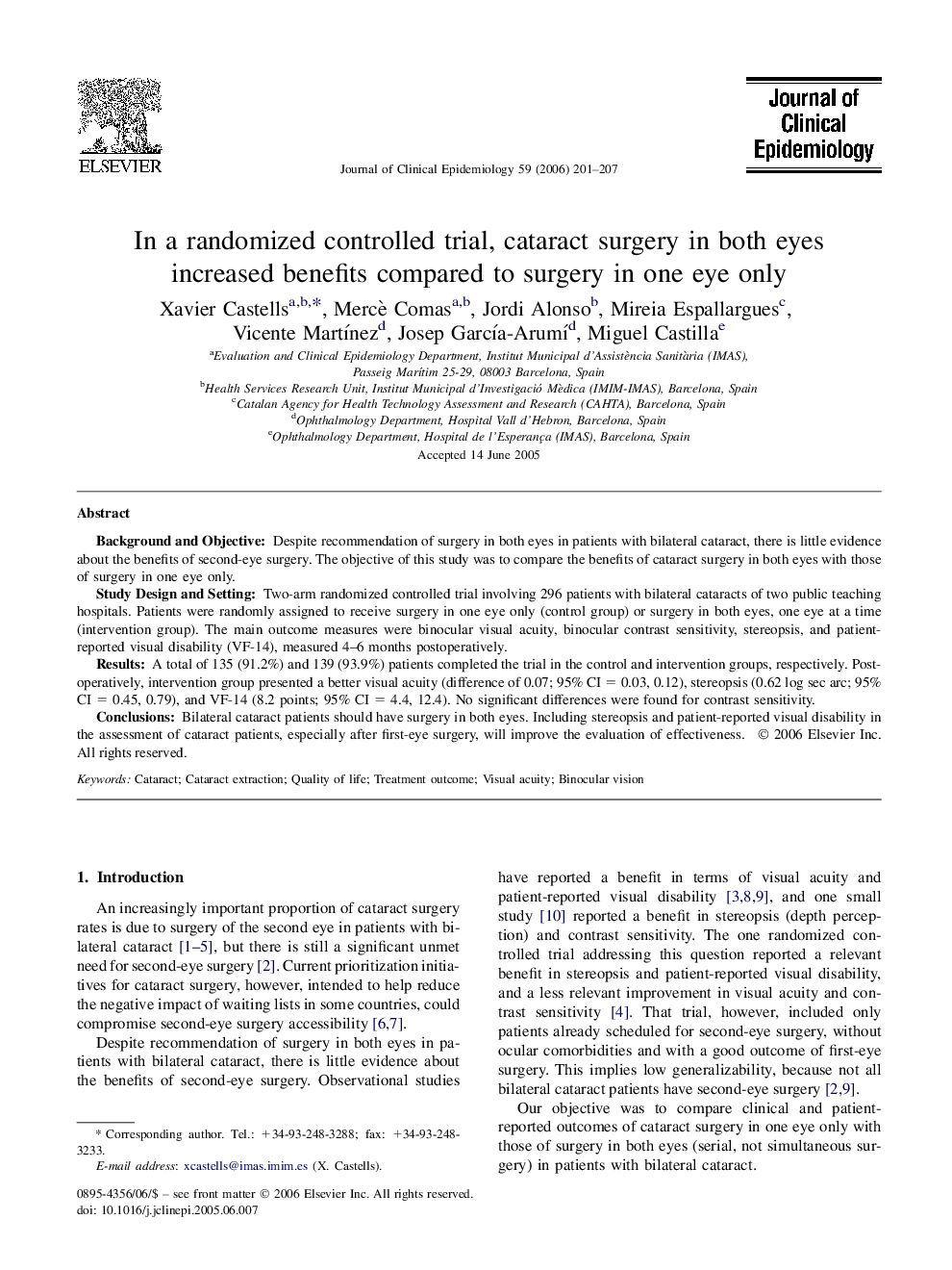| Article ID | Journal | Published Year | Pages | File Type |
|---|---|---|---|---|
| 1083679 | Journal of Clinical Epidemiology | 2006 | 7 Pages |
Background and ObjectiveDespite recommendation of surgery in both eyes in patients with bilateral cataract, there is little evidence about the benefits of second-eye surgery. The objective of this study was to compare the benefits of cataract surgery in both eyes with those of surgery in one eye only.Study Design and SettingTwo-arm randomized controlled trial involving 296 patients with bilateral cataracts of two public teaching hospitals. Patients were randomly assigned to receive surgery in one eye only (control group) or surgery in both eyes, one eye at a time (intervention group). The main outcome measures were binocular visual acuity, binocular contrast sensitivity, stereopsis, and patient-reported visual disability (VF-14), measured 4–6 months postoperatively.ResultsA total of 135 (91.2%) and 139 (93.9%) patients completed the trial in the control and intervention groups, respectively. Postoperatively, intervention group presented a better visual acuity (difference of 0.07; 95% CI = 0.03, 0.12), stereopsis (0.62 log sec arc; 95% CI = 0.45, 0.79), and VF-14 (8.2 points; 95% CI = 4.4, 12.4). No significant differences were found for contrast sensitivity.ConclusionsBilateral cataract patients should have surgery in both eyes. Including stereopsis and patient-reported visual disability in the assessment of cataract patients, especially after first-eye surgery, will improve the evaluation of effectiveness.
